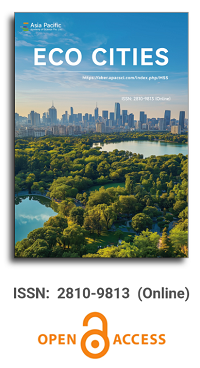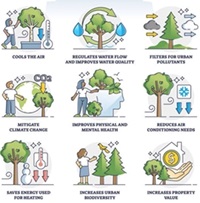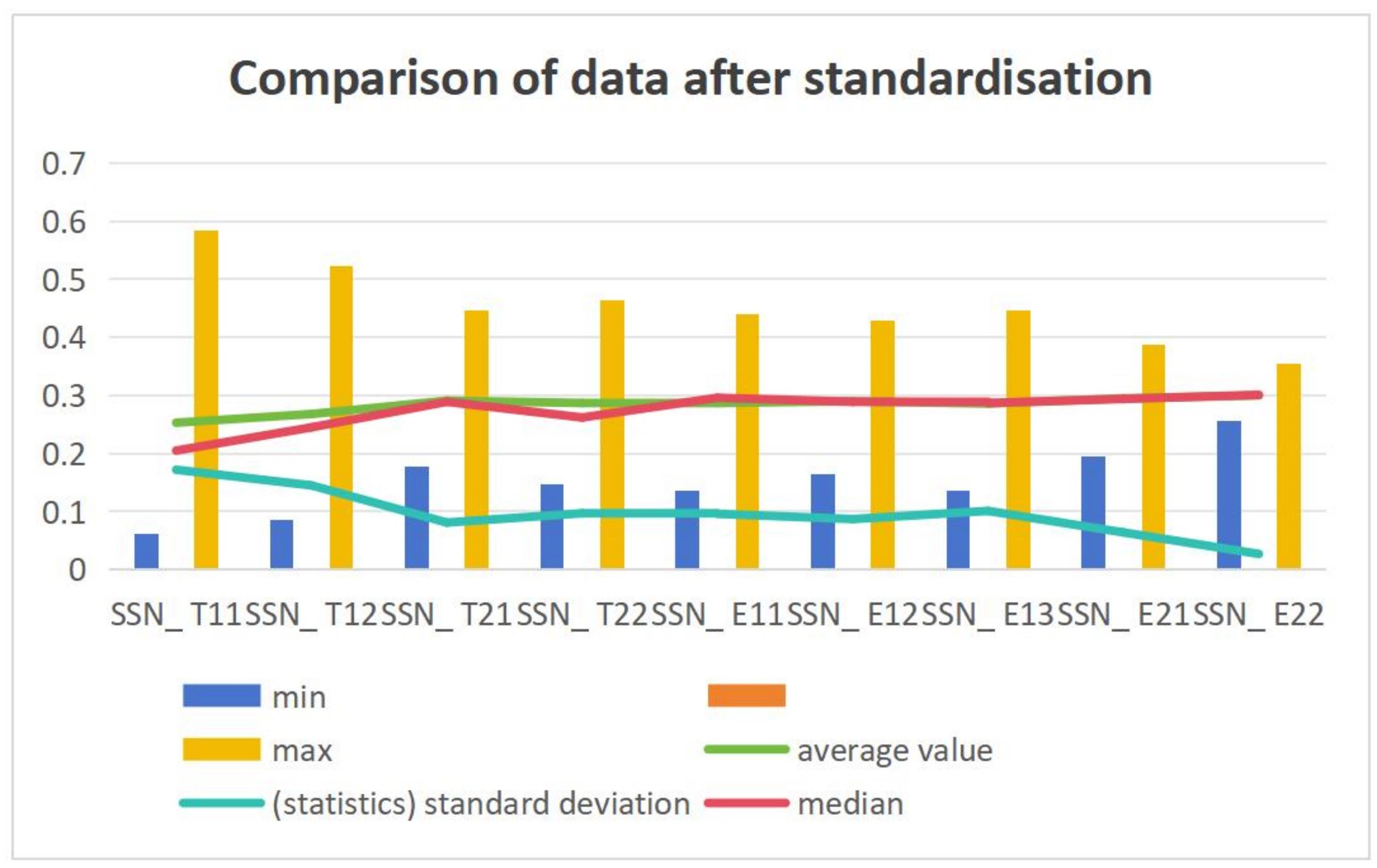


Understanding institutional and policy challenges in China’s coal transition: Insights from the case of Chongqing
Vol 4, Issue 2, 2023
Download PDF
Abstract
China’s efforts and decisions to phase out coal will shape global endeavors in addressing climate change in the upcoming decades. This study investigates the action logic and interactions among different stakeholders, including the central government, local government, coal enterprises, and mine workers, in the case of Chongqing to gain valuable insights into existing institutional and policy challenges. Our results demonstrate that: First, the provincial government is the key to managing and implementing the local coal transitions, its motivation for coal transition, however, may not always align with the nation’s overall priorities. This highlights the need for a top-down coal transition policy to address the mismatched incentives among various participants. Second, Chongqing’s successful experience in maintaining economic development and whole employment demonstrates the possibility of adopting a rapid coal closure in places with similar resource endowments and industrial structures. Chongqing’s collaborative approach to transferring social responsibilities to local governments also serves as a valuable model that may apply to others’ contexts. Lastly, it is crucial to make context-based policy adjustments and establish an integrated and independent governance system when pursuing a rapid, efficient, and safe coal phase-out.
Keywords
References
- The International Energy Agency. World coal consumption, 1978–2020. Available online: https://www.iea.org/reports/coal-information-overview/consumption (accessed on 20 January 2023).
- The International Energy Agency. CO2 emissions in 2022. Available online: https://www.iea.org/reports/co2-emissions-in-2022 (accessed on 2 April 2023).
- He G, Jiang J, Zhang Y, et al. Enabling a rapid and just transition away from coal in China. One Earth 2020; 3(2): 187–194. doi: 10.1016/j.oneear.2020.07.012
- Duan H, Zhou S, Jiang K, et al. Assessing China’s efforts to pursue the 1.5 ℃ warming limit. Science 2021; 372(6540): 378–385. doi: 10.1126/science.aba8767
- Chen R, Xu P, Yao H. Decarbonization of China’s regional power grid by 2050 in the government development planning scenario. Environmental Impact Assessment Review 2023; 101: 107129. doi: 10.1016/j.eiar.2023.107129
- Doelle M, Majekolagbe A. Meaningful public engagement and the integration of climate considerations into impact assessment. Environmental Impact Assessment Review 2023; 101: 107103. doi: 10.1016/j.eiar.2023.107103
- Nedopil C. Lessons from China’s overseas coal exit and domestic support. Science 2023; 379(6637): 1084–1087. doi: 10.1126/science.adf0126
- Stanway D. China no closer to peak coal despite record renewable capacity additions. Available online: https://www.reuters.com/world/china/china-no-closer-peak-coal-despite-record-renewable-capacity-additions-2022-08-22/ (accessed on 22 January 2023).
- Climate Action Tracker. China 2022. Available online: https://climateactiontracker.org/countries/china/ (accessed on 23 March 2023).
- The International Energy Agency. Coal. Available online: https://www.iea.org/energy-system/fossil-fuels/coal (accessed on 25 March 2023).
- Wikipedia. Chongqing. Available online: https://en.wikipedia.org/wiki/Chongqing#:~:text=The%20municipality%20of%20Chongqing%2C%20roughly,well%20as%20various%20discontiguous%20cities (accessed on 1 March 2023).
- General Office of Chongqing Municipal People’s Government. Chongqing’s 14th five-year plan for energy development (2021–2025) (Chinese). Available online: https://www.cq.gov.cn/zwgk/zfxxgkml/szfwj/qtgw/202206/t20220615_10818266.html (accessed on 5 March 2023).
- National Coal Industry Website. Chongqing plans to trim mines to approximately 40 (Chinese). Available online: https://www.luanhn.com/article/7672 (accessed on 10 March 2023).
- Andrews-Speed P, Ma G, Shao B, Liao C. Economic responses to the closure of small-scale coal mines in Chongqing, China. Resources Policy 2005; 30(1): 39–54. doi: 10.1016/j.resourpol.2004.12.002
- Chongqing Municipal Bureau of Statistics. Chongqing Statistical Yearbook 2022. Available online: https://tjj.cq.gov.cn/zwgk_233/tjnj/2022/zk/indexeh.htm (accessed on 10 March 2023).
- Li H, Cao Y, Qin Y, et al. Geological control factors and characteristics of gas occurrence in Chongqing coal mining area (Chinese). Available online: https://www.cnki.net/KCMS/detail/detail.aspx?dbcode=CJFD&dbname=CJFDLAST2016&filename=MDKT201502001&uniplatform=OVERSEA&v=w4Ef8jP9MLJQImTagT1TAcx_n5Warf9v4wZBz8f_0oScV33edEqizzW-MKxI6OMv (accessed on 10 March 2023).
- Zhu A, Wang Q, Liu D, Zhao Y. Analysis of the characteristics of CH4 emissions in China’s coal mining industry and research on emission reduction measures. International Journal of Environmental Research and Public Health 2022; 19(12): 7408.
- Long S, Hu B, Zhou K, et al. The prospect analysis of Chongqing city coal retained resources reserve status quo and development utilization (Chinese). China Mining Magazine 2012; 21.
- Chen Y, Xu J, Tan K, Gou Y. Statistical analysis and regular research on Chongqing coal mine accidents. In: Proceedings of the 2021 International Conference on Intelligent Computing, Automation and Applications (ICAA); 25–27 June 2021; Nanjing, China. pp. 64–70.
- Yang Z, Tu KJ, Thuy NN. Promoting regional coal just transitions in China, Europe and beyond: Europe-China dialogues on a just coal transition in 2021. Available online: https://static.agora-energiewende.de/fileadmin/Projekte/2022/Publications_other/A-EW_262_EFC_China_WEB.pdf (accessed on 8 March 2023).
- van Voss BH, Rafaty R. Sensitive intervention points in China’s coal phaseout. Energy Policy 2022; 163: 112797. doi: 10.1016/j.enpol.2022.112797
- Jin X, Xu L, Xin Y, Adhikari A. Political governance in China’s state-owned enterprises. China Journal of Accounting Research 2022; 15(2): 100236. doi: 10.1016/j.cjar.2022.100236
- Wang J. The political logic of corporate governance in China’s state-owned enterprises. Cornell International Law Journal 2014; 47: 631–669.
- Liang S, Li Z, Chen D, Chen S. Political ranks, incentives and firm performance. China Journal of Accounting Studies 2016; 3(2): 87–108. doi: 10.1080/21697213.2015.1045401
- Chongqing Municipal Development and Reform Commission. Reply from Chongqing Municipal Energy Bureau on Proposal No. 1018 of the First Session of the Sixth Chongqing Municipal Committee of CPPCC (Chinese). Available online: https://fzggw.cq.gov.cn/zwgk/zfxxgkml/jytabl/tagk_53512/202305/t20230506_11938790_wap.html (accessed on 14 March 2023).
- Chongqing Municipal Finance Bureau. Notice from the Chongqing Municipal Finance Bureau on the allocation of special awards and subsidies for structural adjustment of central industrial enterprises and municipal-level awards and subsidies for overcapacity reduction (Chinese). Available online: https://czj.cq.gov.cn/zwgk_268/zfxxgkml/zcwj/qtwj/202107/t20210719_9486005.html (accessed on 2 March 2023).
- Li B, Wang C. Summer is here, is Chongqing’s coal still enough? (Chinese). Available online: https://www.china5e.com/news/news-1118908-1.html (accessed on 2 March 2023).
- Southern Energy Watch. Chongqing power supply deeply in jeopardy after coal closure (Chinese). Available online: https://finance.sina.com.cn/chanjing/cyxw/2022-05-13/doc-imcwiwst7253917.shtml (accessed on 2 March 2023).
- Wang H. Chongqing has reached a 19 million tons coal cooperation agreement with Shaanxi Coal Group in 2023 (Chinese). Available online: https://www.ndrc.gov.cn/fggz/jjyxtj/mdyqy/202301/t20230131_1347842.html (accessed on 2 March 2023).
- Sina Finance. “Chongqing’s largest coal company” Chongqing Energy defaulted on 915 million commercial notes, and 74 billion debts overwhelmed the financial situation (Chinese). Available online: https://finance.sina.cn/bond/zsyw/2021-03-03/detail-ikftssaq0266097.d.html?cre=wappage&mod=r&loc=2&r=0&rfunc=9&tj=wap_news_relate (accessed on 2 March 2023).
- Yooya Asset. “New” development of new energy: Hidden worries of Chongqing Energy Investment’s bankruptcy and reorganization (Chinese). Available online: https://roll.sohu.com/a/576852032_120251847 (accessed on 2 March 2023).
- The Economic Observer. A total of 915 million in bank notes and letters of credit has expired and has not been returned. The disposal plan of Chongqing Energy Group is yet to be solved (Chinese). Available online: https://xueqiu.com/3502728586/173657276 (accessed on 2 March 2023).
- Duan S. Chongqing energy defaults on USD141 million debt after coal mines forced to shut. Available online: https://www.yicaiglobal.com/news/chongqing-energy-defaults-on-usd141-million-worth-of-debt- (accessed on 2 March 2023).
- International Energy Website. A billion-dollar energy state-owned enterprise has entered bankruptcy proceedings! How to relocate 45,000 employees? (Chinese). Available online: https://m.in-en.com/article/html/energy-2321195.shtml (accessed on 3 March 2023).
- Xi Q. China Resources Co., Ltd. will strategically organize Chongqing Energy Group (Chinese). Available online: https://finance.sina.com.cn/chanjing/gsnews/2022-08-04/doc-imizirav6732229.shtml?cref=cj (accessed on 3 March 2023).
- China Coal Website. Exit as a whole! The history of coal mining in Chongqing’s state-owned coal mines ends (Chinese). Available online: https://news.sina.cn/2021-02-01/detail-ikftpnny3181247.d.html (accessed on 3 March 2023).
- Chongqing Municipal Development and Reform Commission. Announcement of the Chongqing Municipal Development and Reform Commission on invitations to participate in the competitive selection of the annual evaluation of the comprehensive management effectiveness of coal mining subsidence areas in the city (Chinese). Available online: https://fzggw.cq.gov.cn/zwxx/tzgg/202209/t20220916_11118579_wap.html (accessed on 5 March 2023).
- Chongqing Municipal People’s Government. Chongqing’s 14th five-year plan for ecological and environmental protection (2021–2025) (Chinese). Available online: https://sthjj.cq.gov.cn/zwgk_249/zfxxgkzl/fdzdgknr/ghjh/202202/t20220216_10400261_wap.html (accessed on 5 March 2023).
- Standaert M. Despite pledges to cut emissions, China goes on a coal spree. Available online: https://e360.yale.edu/features/despite-pledges-to-cut-emissions-china-goes-on-a-coal-spree (accessed on 5 March 2023).
- China Coal Industry Association. 2021 China coal industry economic operation report (Chinese). Available online: http://lwzb.stats.gov.cn/pub/lwzb/tzgg/202205/W020220511399104684575.pdf (accessed on 5 March 2023).
- Meidan M, Andrews-Speed P, Hove A, Qin Y. China’s climate and energy policy after the two sessions: More wait and see. Available online: https://www.oxfordenergy.org/publications/chinas-climate-and-energy-policy-after-the-two-sessions-more-wait-and-see/ (accessed on 5 April 2023).
- You X. Analysis: What does China’s coal push mean for its climate goals? Available online: https://www.carbonbrief.org/analysis-what-does-chinas-coal-push-mean-for-its-climate-goals/ (accessed on 5 March 2023).
- Centre for Research on Energy and Clean Air. China permits two new coal power plants per week in 2022. Available online: https://energyandcleanair.org/publication/china-permits-two-new-coal-power-plants-per-week-in-2022/ (accessed on 6 March 2023).
- National Energy Information Platform. Chongqing’s state-owned coal mines withdraw as a whole (Chinese). Available online: https://baijiahao.baidu.com/s?id=1690572271717271723&wfr=spider&for=pc (accessed on 5 March 2023).
- The State Council of the People’s Republic of China. Provisions of the State Council on investigation for administrative responsibility for extraordinarily serious safety accidents. Available online: http://www.npc.gov.cn/zgrdw/englishnpc/Law/2007-12/14/content_1384228.htm (accessed on 5 March 2023).
- Nie H, Jiang M, Wang X. The impact of political cycle: Evidence from coalmine accidents in China. Journal of Comparative Economics 2013; 41(4): 995–1011. doi: 10.1016/j.jce.2013.04.002
- Shi Z, Chen H, Chen K. Does the economic growth target overweight induce more polluting activities? Evidence from China. PloS One 2023; 18(3): e0282675. doi: 10.1371/journal.pone.0282675
- You X. Explainer: Why China’s provinces are so important for action on climate change. Available online: https://www.carbonbrief.org/explainer-why-chinas-provinces-are-so-important-for-action-on-climate-change/ (accessed on 6 March 2023).
- Chongqing Municipal Bureau of Statistics. 2020 Chongqing national economic and social development statistical bulletin (Chinese). Available online: https://tjj.cq.gov.cn/zwgk_233/fdzdgknr/tjxx/sjzl_55471/tjgb_55472/202103/t20210318_9008291_wap.html (accessed on 6 March 2023).
- Chongqing Municipal Bureau of Statistics. 2021 Chongqing national economic and social development statistical bulletin (Chinese). Available online: https://tjj.cq.gov.cn/zwgk_233/fdzdgknr/tjxx/sjzl_55471/tjgb_55472/202203/t20220318_10522726_wap.html (accessed on 6 March 2023).
- Chongqing Municipal Bureau of Statistics. 2022 Chongqing national economic and social development statistical bulletin (Chinese). Available online: https://tjj.cq.gov.cn/zwgk_233/fdzdgknr/tjxx/sjzl_55471/tjgb_55472/202303/t20230317_11775723_wap.html#:~:text=%E5%88%9D%E6%AD%A5%E6%A0%B8%E7%AE%97%EF%BC%8C%E5%85%A8%E5%B9%B4%E5%AE%9E%E7%8E%B0,%E4%B8%BA6.9%3A40.1%3A53.0%E3%80%82 (accessed on 17 March 2023).
- State-owned Assets Supervision and Administration Commission, Ministry of Finance, National Development and Reform Commission. Guiding opinions on functional definition and classification of state-owned enterprises (Chinese). Available online: https://www.gov.cn/gongbao/content/2016/content_5061700.htm (accessed on 6 March 2023).
- Prag A, Röttgers D, Scherrer I. State owned enterprises and the low-carbon transition. OECD Environment Working Papers No.129. OECD; 2018. doi: 10.1787/06ff826b-en
- Wei M, Cai G, Liu J. Research on governance of Chinese state-owned listed companies based on classification (Chinese). Journal of Sun Yat-sen University (Social Science Edition) 2017; 57(4): 175–192.
- Fan JPH, Wong TJ, Zhang T. Politically connected CEOs, corporate governance, and Post-IPO performance of China’s newly partially privatized firms. Journal of Financial Economics 2007; 84(2): 330–357. doi: 10.1016/j.jfineco.2006.03.008
- Young MN, Peng MW, Ahlstrom D, et al. Corporate governance in emerging economies: A review of the principal—Principal perspective. Journal of Management Studies 2008; 45(1): 196–220. doi: 10.1111/j.1467-6486.2007.00752.x
- Wright T. The Political Economy of the Chinese Coal Industry: Black Gold and Blood-Stained Coal. Routledge; 2012. Volume 45.
- Lo K. Authoritarian environmentalism, just transition, and the tension between environmental protection and social justice in China’s forestry reform. Forest Policy Economics 2021; 131: 102574. doi: 10.1016/j.forpol.2021.102574
- China Worker Website. Qijiang Industry’s road to getting rid of “coal” (Chinese). Available online: http://finance.sina.com.cn/jjxw/2021-10-05/doc-iktzscyx8029390.shtml (accessed on 9 March 2023).
- Wansheng News. Wansheng: A “green” new life for former coal miners (Chinese). Available online: https://ws.cq.gov.cn/zwxx_165/wsdt/202010/t20201019_8035500.html (accessed on 9 March 2023).
- The Emergency Management Bureau of Qijiang District. The people in the mining area have a sense of security again—The district emergency bureau strengthens supervision services for closed mines and actively carries out activities to do practical things for the people (Chinese). Available online: https://www.cqqj.gov.cn/bm/qyjj/zwxx_58568/dt_58569/202109/t20210909_9675150.html (accessed on 9 March 2023).
- Chongqing Municipal Work Safety Commission Office. Notice from the Chongqing Municipal Work Safety Commission Office on further strengthening coal mine closure safety work (Chinese). Available online: https://fzggw.cq.gov.cn/zwxx/tzgg/202103/P020210309571144045610.pdf (accessed on 9 March 2023).
- Security Management Website. Investigation report on the February 6 collapse of Yuyang Coal Mine of Yuxin Energy Co., Ltd. of CQEIG (Chinese). Available online: http://www.safehoo.com/Item/5650733.aspx (accessed on 9 March 2023).
- Qijiang District Statistics Bureau. 2020 Chongqing Qijiang district national economic and social development statistical bulletin (Chinese). Available online: https://www.cqqj.gov.cn/zwgk_159/fdzdgknr/tjxx/sjfb/tjgb/202106/t20210617_9402961.html (accessed on 9 March 2023).
- Qijiang District Statistics Bureau. 2021 Chongqing Qijiang district national economic and social development statistical bulletin (Chinese). Available online: https://www.cqqj.gov.cn/zwgk_159/fdzdgknr/tjxx/sjfb/tjgb/202204/t20220412_10610679.html (accessed on 12 March 2023).
- Qijiang District Statistics Bureau. 2022 Chongqing Qijiang district national economic and social development statistical bulletin (Chinese). Available online: https://www.cqqj.gov.cn/zwgk_159/fdzdgknr/tjxx/sjfb/tjgb/202303/t20230329_11823426.html (accessed on 29 March 2023).
- Wansheng Statistics Bureau. 2020 Chongqing Wansheng economic development district national economic and social development statistical bulletin (Chinese). Available online: https://ws.cq.gov.cn/bm/tjj/zwgk_70287/fdzdgknr_70290/tjxx_197374/tjgb/202106/t20210616_9400289.html (accessed on 16 March 2023).
- Wansheng Statistics Bureau. 2021 Chongqing Wansheng economic development district national economic and social development statistical bulletin (Chinese). Available online: https://ws.cq.gov.cn/bm/tjj/zwgk_70287/fdzdgknr_70290/tjxx_197374/tjgb/202207/t20220726_10952827.html (accessed on 16 March 2023).
- Wansheng Statistics Bureau. 2022 Chongqing Wansheng economic development district national economic and social development statistical bulletin (Chinese). Available online: https://ws.cq.gov.cn/bm/tjj/zwgk_70287/fdzdgknr_70290/tjxx_197374/tjgb/202306/t20230616_12070696.html (accessed on 16 June 2023).
- Wang X, Lo K. Political economy of just transition: Disparate impact of coal mine closure on state-owned and private coal workers in Inner Mongolia, China. Energy Research & Social Science 2022; 90: 102585. doi: 10.1016/j.erss.2022.102585
- Andrews-Speed P. Applying institutional theory to the low-carbon energy transition. Energy Research & Social Science 2016; 13: 216–225. doi: 10.1016/j.erss.2015.12.011
- Jiang T, Zhang R, Zhang F, et al. Assessing provincial coal reliance for just low-carbon transition in China. Environmental Impact Assessment Review 2023; 102: 107198. doi: 10.1016/j.eiar.2023.107198
Supporting Agencies
Copyright (c) 2023 Danping Yang, Heinz Konietzky, Zhiwei Fan, Chuan Zhou, Manyi Li

This work is licensed under a Creative Commons Attribution 4.0 International License.

This site is licensed under a Creative Commons Attribution 4.0 International License (CC BY 4.0).

Chinese Academy of Sciences, China
Indexing & Archiving
Asia Pacific Academy of Science Pte. Ltd. (APACSCI) specializes in international journal publishing. APACSCI adopts the open access publishing model and provides an important communication bridge for academic groups whose interest fields include engineering, technology, medicine, computer, mathematics, agriculture and forestry, and environment.



.jpg)

.jpg)



